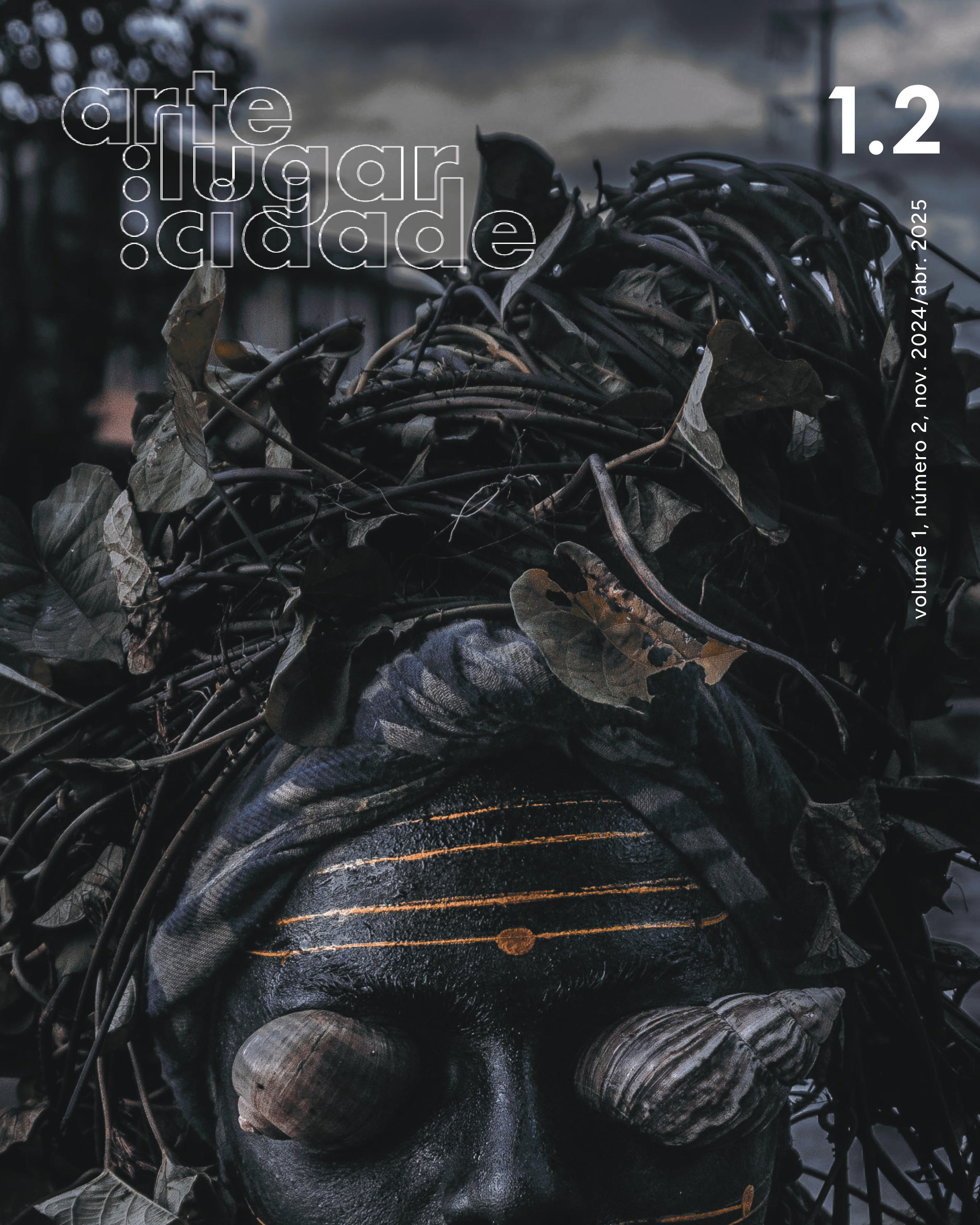Spurensicherung - Retaining Traces. The Urban Ground as an Archive of Reparative Ecologies
DOI:
https://doi.org/10.22409/arte.lugar.cidade.v1i2.65124Keywords:
urban grounds, urban rivers, critical zones, healing, repairAbstract
This article draws from the German artistic tradition of Spurensicherung/“securing traces” to explore how new ways of healing, repair and reparation emerge from urban space, and in particular, from its both lively and polluted, elemental/unruly and heavily constructed grounds. In a first part of the article, I explore how Berlin’s postwar “rubble soils” have from the 1970s generated new alliances at the intersection of soil arts and science that troubles ideas of elemental “purity” and “renaturalization” thus presenting urban soils as disruptive archives. The article then moves on to present-day São Paulo to argue that new ecopolitical movements that trace the urban grounds for its hidden rivers and riparian communities are not simply “evidencing”, but rather producing new human-material collectivities of witnesses that enact multiple pasts, presents and futures to claim environmental justice and to practice care and reparation of all kinds.
References
Beier, B. (2018). The Earth Print Archive. In A. Toland, J. Stratton Noller, & G. Wessolek (Eds.), Field to Palette – Dialogues on Soil and Art in the Anthropocene (pp. 591-603). CRC Press, Taylor & Francis Group.
Benjamin, W. (1983). Das Passagen-Werk. Erster Band. Suhrkamp.
Brantley, S. L., Goldhaber M. B., & Vala Ragnarsdottir, K. (2007). Crossing Disciplines and Scales to Understand the Critical Zones, Elements (3), 307-314.
Bruno, T. (2023). Ecological memory in the biophysical afterlife of slavery. Annals of the American Association of Geographers, 113(7), 1543-1553.
Carvalho, P. M., & Bastos, R. L. (2024). Sítio arqueológico do Quilombo Saracura: A insurgência do movimento negro pelo direito à memória na cidade de São Paulo. Revista de Arqueologia, 37(2), 81-101. https://doi.org/10.24885/sab.v37i2.1159 .
Castro, M. S. (2006). Bexiga: Um bairro Afro-Italiano: comunicação, cultura e construção de identidade étnica. [Dissertação de Mestrado]. Universidade de São Paulo. Escola de Comunicação e Artes.
Cotrim, L. (2015). Saracura, Yorubá, Bixiga: vai, vai para a Memória. https://spcity.com.br/saracura-yoruba-bixiga-vai-vai-memoria/
Derrida, J. (1996). Résistances. In J. Derrida. Résistances de la psychanalyse (pp. 44 et seq.). Galilée.
Ezcurra, M. P. (2020). The flight of seeds. In M. Gandy & S. Jasper (Eds.), The Botanical City (pp. 122-130). Jovis.
Farías, I. & Bruun Jensen, C. (forthcoming). Urban Critical Zones. The MIT Press.
Gandy, M. (2022). Urban political ecology: A critical reconfiguration. Progress in Human Geography, 46(1), 21-43.
Garmany, J. & Richmond, M. A. (2019). Hygenisation, Gentrification, and Urban Displacement in Brazil. Antipode 52(1), 124-144.
Hamilton, J. M. & Neimanis, A. (2018). Composting feminisms and environmental humanities. Environmental Humanities, 10(2), 501-527.
Husserl, E. (2009 [1918]). Analysen zur passiven Synthesis. Aus Vorlesungs- und Forschungsmanuskripten 1918-1926; Sedimentierung (pp. 263-264). In H.-H. Gander. Husserl-Lexikon. Wissenschaftliche Buchgesellschaft.
Kemmer, L. & Jasper, S. (2024).Urbanizing soil: Berlin Teufelsberg as leaky archive. Berliner Blätter, 87, 95-104. https://doi.org/10.18452/28588
Krämer, S. (2007). Spur. Spurenlesen als Orientierungstechnik und Wissenskunst. Suhrkamp.
Lang, N. (1996).Farben, Zeichen, Steine. In Metken, G. Spurensicherung. Verlag der Kunst.
Latour, B. (2018). Down to Earth: Politics in the New Climate Regime. Wiley.
Lévinas, E. (1983). Die Spur des Anderen. Alber.
Lyons, K. (2018). Chemical warfare in Colombia, evidentiary ecologies and senti-actuando practices of justice. Social Studies of Science, 48(3), 414-437.
Metken, G. (1996). Spurensicherung. Eine Revision; Texte 1977-1995. Verlag der Kunst.
Miehlich, G. (2009). Böden als Archive der Natur- und Kulturgeschichte. In NNA-Berichte. Institut für Bodenkunde.
Poirier, A.& Poirier, P. (1996). Zerstörung oder Rekonstruktion? Die künstlichen Ruinen von Anne und Patrick Poirier. In G. Metken, Spurensicherung. Verlag der Kunst.
Rolnik, R. (2022). Movimento Quilombo Saracura se mobiliza nas obras de escavação da Linha 6 do Metrô em São Paulo. Jornal da USP, July 21, 2022. https://jornal.usp.br/radio-usp/movimento-quilombo-saracura-se-mobiliza-na-obras-de-escavacao-da-linha-6-do-metro-em-sao-paulo/ .
Romeo, F. (2024). Forensic Architecture and the Aesthetics of Post-Human Testimony. Digital Journalism, 1-18. https://doi.org/10.1080/21670811.2024.2306216 .
Serra, A. M. (2011). O traço da origem e o traço do traço: Benjamin e a arqueologia da Spur. Cadernos Benjaminianos, 4, 1-11.
Toland, A. & Wessolek, G. (2017) Devil in the Sand - The Case of Teufelsberg Berlin and Cultural Ecosystem Services (pp. 1-10). In K.-H. J. Kim and M. J. Levin (Eds.), Urban Soils and Culture. Schweizerbart Verlag.
Weizman, E. (2017). Forensic architecture: Violence at the threshold of detectability. Princeton University Press.
Wiehl, A. (2022). Silent Landcsapes. Kunstverein Walkmühle Wiesbaden und Kunstverein Bayreuth.
Downloads
Published
How to Cite
Issue
Section
License
Copyright (c) 2024 Laura Kemmer

This work is licensed under a Creative Commons Attribution-NonCommercial-NoDerivatives 4.0 International License.


